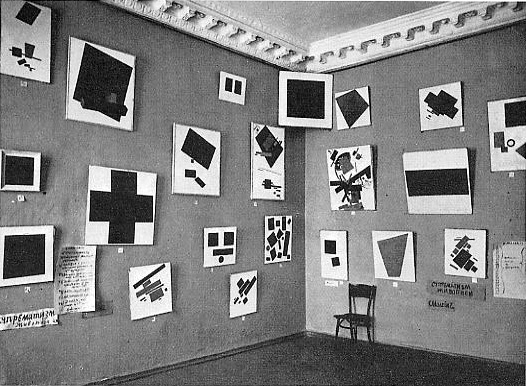| Kazimer Malevich, "Last Futurist Exhibition"
(1915). |
|
 |
In 1913 Malevich met a group of artists and poets interested
in taking a more philosophical and theoretical approach to art.
The theory espoused by Krucherykh and Khlebnikov of the 'self-sufficient
world' influenced Malevich enormously. The notion of 'zaum' was
promoted, a state where experience occurs beyond the naturally
perceived world. This concept and his work for the Cubo-Futurist
opera 'Victory Over The Sun' (1913) propelled Malevich into the
style of Suprematism. It was first seen at the '0,10' (Zero-Ten)
exhibition of 1915, and is best shown by works such as 'Black
Square' (1915) and 'Black Cross'
[various dates]. Suprematism reduced abstract painting to a previously
unheard of geometrical simplicity. His work at this time ranged
from the austere with his 'White on White' series to the colourful
such as in 'Yellow Parallelogram on White' (1917). Although Malevich
only worked in this style for about five years, it is crucial
to understanding his development and his work as a whole. Malevich at
Art Icons. |
|
|